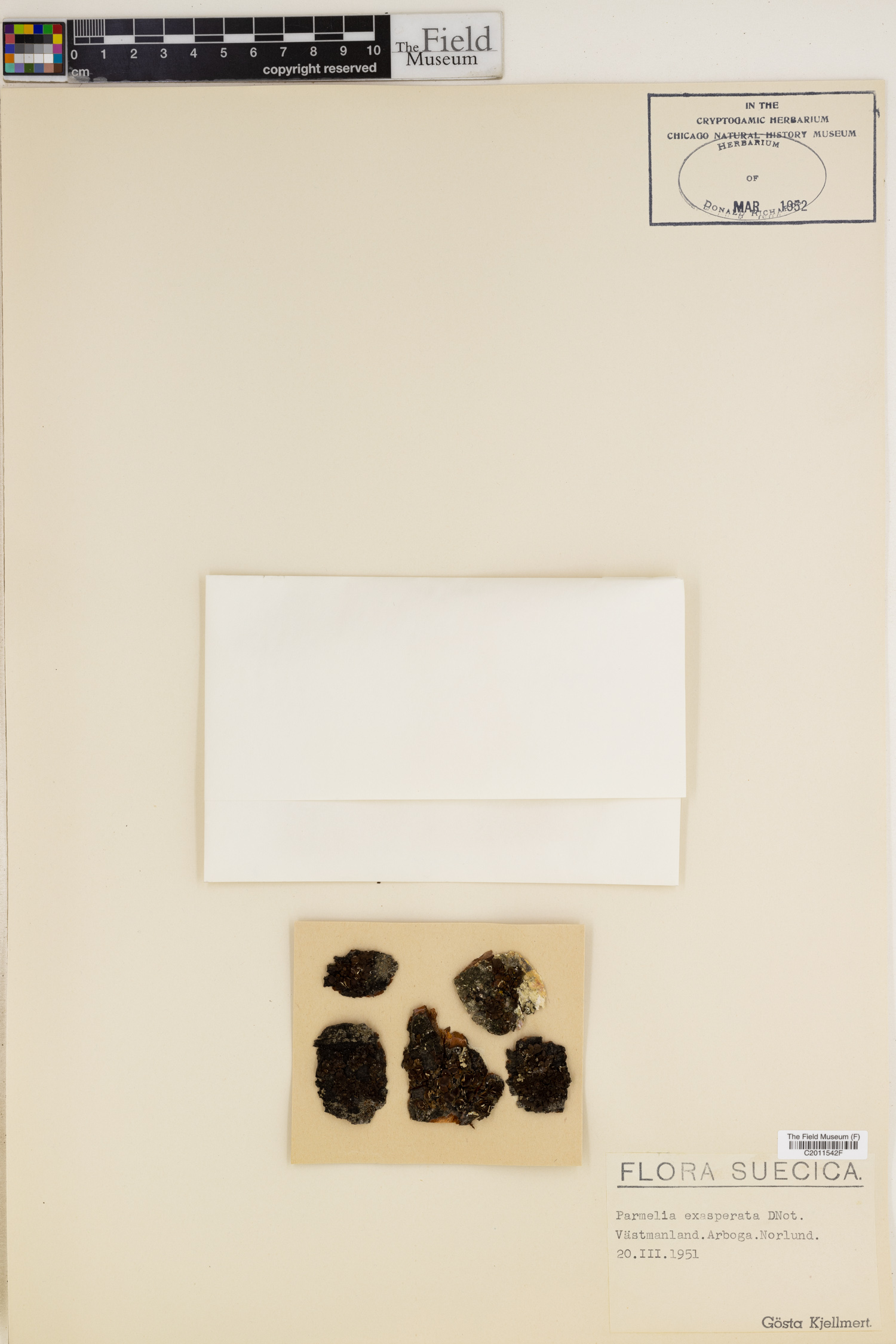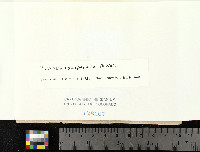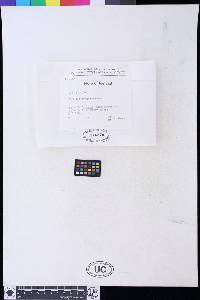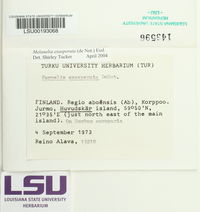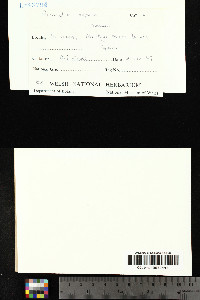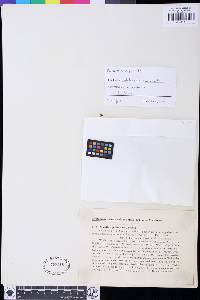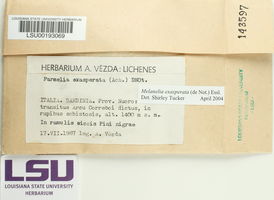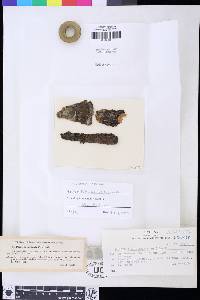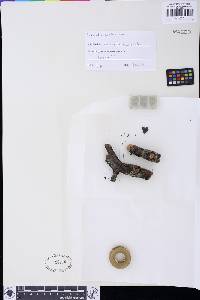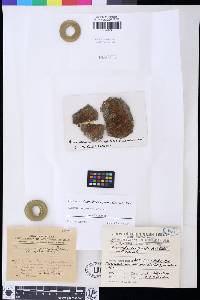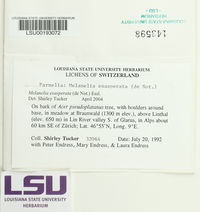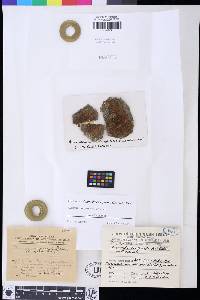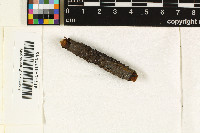
- Home
- Search
- Images
- Species Checklists
- US States: O-Z >
- US National Parks
- Central America
- South America
- US National Parks
- Southern Subpolar Region
|
|
|
|
Family: Parmeliaceae
[Imbricaria aspera (A. Massal.) Körb., moreImbricaria aspidota (Ach.) Rehm, Melanelia exasperata (De Not.) Essl., Melanelia exasperata f. exasperata (De Not.) Essl., Melanelia exasperata f. pruinosa (Parrique) S.Y. Kondr., Parmelia aspera A. Massal., Parmelia aspera f. aspera A. Massal., Parmelia aspera f. aspidota (Ach.) Maas Geest., Parmelia aspera f. exasperans (Nyl.) Grummann, Parmelia aspidota (Ach.) Röhl., Parmelia aspidota f. aspidota (Ach.) Röhl., Parmelia aspidota f. corallizans (Harm.) Hillmann, Parmelia aspidota f. exasperans (Nyl.) Hillmann, Parmelia aspidota f. lobulicola Gyeln., Parmelia aspidota f. pruinosa (Parrique) Hillmann, Parmelia aspidota var. aspidota (Ach.) Röhl., Parmelia aspidota var. exasperans (Nyl.) Szatala, Parmelia exasperata De Not., Parmelia exasperata f. corallizans Harm., Parmelia exasperata f. exasperata De Not., Parmelia exasperata f. pruinosa Parrique, Parmelia exasperata var. exasperans (Nyl.) H. Olivier, Parmelia exasperata var. exasperata De Not., Parmelia olivacea f. aspidota (Ach.) Th. Fr., Parmelia olivacea var. aspera (A. Massal.) anon.] |
Global occurrence: Africa (incl Madagascar) | Eurasia – Asia Extratropical | Eurasia – Europe | Americas – North America (incl Mexico) | Eurasia – Asia Tropical | Arctic. Substrate: wood – dead, living | bark, cork, plant surface – trunks, branches, twigs | rock – siliceous, siliciferous, acidic | rock, stones, pebbles – unspecified. Life habit: lichenized (mutualistic with algal photobionts). Thallus: foliose (foliaceous), leaf-like; continuous, diffuse, effuse; [th] upper surface: brown(ish) green (olivaceous, olive green) | black(ish) brown | green(ish) brown (olive brown) | red(dish) brown (if pale: orange brown); [th upper surface]: epruinose; [th marginal and upper surface] specific structures: absent | present; [th margin] cilia, cilioid structures: absent; [th upper surface] isidia, isidioid structures: absent | present; [th upper surface] soredia, soralia, soralioid structures: absent; [th] morphol substructures (eg areoles, lobes, branches) width [mm]: (low) 1.0 (high) 4.0 (max) 6.0; [th] morphol substructures (eg areoles, squamules): distantly discontiguous; [th] morphol substructures (eg areoles, lobes, branches) upper surface: granulose, granular | verrucose, warted | pseudocyphellate, with pseudocyphellae; [th] morphol substructures (eg lobes, branches): subdichotomous | irregular; [th] lower surface: black(ish) | brown(ish) (if pale: fawn, tan; if mid: cinnamon); [th lower surface] specific structures: present; [th lower surface] rhizines, rhizoid structures: present; [th lower surface] rhizines, rhizinoid structures: unbranched, simple. Ascomata: absent | present; ascoma: apothecial, apothecioid – hymenial; ascoma [mm]: (median) 6.0 (max) 8.0; ascoma: sessile, superficial | subpedicellate, substipitate, subpedunculate, substalked; [ascm, if apoth] disc, mazaedium: concave | plane, flat, flattened, expanded; [ascm, if apoth] margin surface; [if perith] periostiolar area, ostiole, involucrellum: black(ish) brown | green(ish) brown (olive brown) | red(dish) brown (if pale: orange brown); [ascm, if apoth] margin excipular photobionts: present; [ascm, if apoth] subhymenial layers, hypothecium; [if perith] basal excipulum: hyaline, colourless; [ascm] paraphyses/-oids: present. Asci: lecanoralean; [asc] tholus: thickened; [asc] tholus amyloidity (iodine reaction): present; [asc] tholus amyloidity pattern: amyloid with widening axial body towards the apex (= Lecanora-, Parmelia-, Rinodina-types etc). Ascospores: (median) 8.0; [asp] shape: broadly ellipsoidal | ellipsoidal; [asp] length [µm]: (low) 8.5 (high) 12.0; [asp] width [µm]: (low) 5.0 (high) 7.0; [asp] septa: absent – spore lumen unilocular, monolocular; [asp] pigmentation: hyaline, colourless; [asp] perispore, epispore: not apparent. Conidiomata: absent | present. Conidia: fusiform | acerose (needle-shaped); [co] length [µm]: (low) 7.0 (high) 8.0. Secondary metabolites: absent. Primary photobiont: present, chlorophytaceous – trebouxiaceous, chlorococcoid. Secondary photobionts (eg in cephalodia): absent. |

